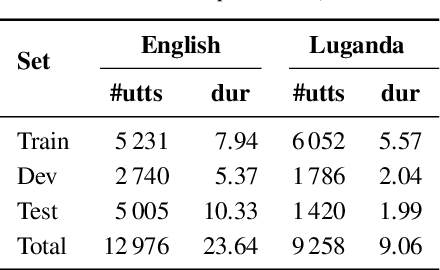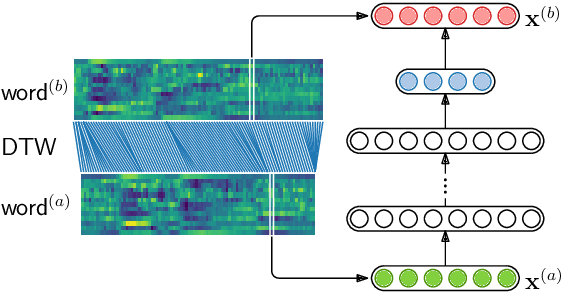Almost Zero-Resource ASR-free Keyword Spotting using Multilingual Bottleneck Features and Correspondence Autoencoders
Paper and Code
Nov 14, 2018



We compare features for dynamic time warping based keyword spotting in an almost zero-resource setting. The objective is to support United Nations (UN) humanitarian relief efforts in parts of Africa with severely under-resourced languages. As supervised resource, we restrict ourselves to an easily-compiled small set of isolated keywords. For feature extraction, we integrate a multilingual bottleneck feature extractor (BNF), trained on well-resourced out-of-domain languages, with a correspondence autoencoder (CAE), trained on extremely sparse in-domain data. We find that, on their own, BNFs and CAE features achieve more than 2% absolute performance improvement over baseline MFCCs. However, by using BNFs as input to the CAE, even better performance is achieved, with an 11% absolute improvement in ROC AUC over MFCCs and twice as many top-10 retrievals. We conclude that integrating BNFs with the CAE allows both large out-of-domain and sparse in-domain resources to be exploited for improved ASR-free keyword spotting.
 Add to Chrome
Add to Chrome Add to Firefox
Add to Firefox Add to Edge
Add to Edge